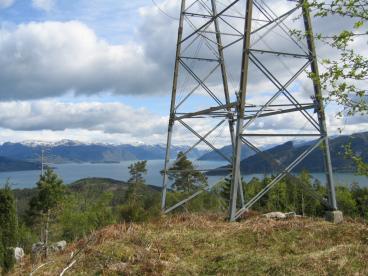Tensions between Norwegians’ energy demands and environmental concerns look set to ignite once again, as new plans to build large stretches of power lines over vulnerable coastal locations were unveiled on Monday.

Norway’s water resources and energy directorate (Norges vassdrags- og energidirektorat, NVE) has published plans to build power lines from Kollsnes to Mongstad, crossing four coastal municipalities in western Norway, their islands and open sea just north of the country’s second-largest city, Bergen. The case mirrors the explosion of controversy that met the proposed construction of power lines, dubbed “monster masts,” around Hardanger, a fjord renowned for its scenery and vibrant tourism.
Local politicians and environmentalists again make up the bulk of the opposition groups. Tensions between local and state government are likely to become the focal point of national attention, as yet another power supply-related issue looks set to pit local members of the governing red-green coalition parties against their national leadership.
The latest controversy parallels last year’s uproar over plans to build a 90-kilometer stretch of power lines along the northern side of the Hardanger Fjord, itself in close proximity to Bergen. State officials and electricity provider Statkraft argue the power lines are needed to ward off electricity shortages in Bergen, but Hardanger residents, vocal representatives of the tourism industry and environmentalists opposed the plan, launching a campaign that included acts of civil disobedience that briefly halted the first steps of construction.
All three governing parties were believed to have taken a hit in opinion polls because of the issue and the tensions it revealed, particularly within the ranks of the Socialist Left Party (Sosialistisk Venstreparti, SV), which has trumpeted its green credentials in recent elections, and the Center Party (Senterpartiet, Sp), who began life in the early 1920s as a farmers’ party and has traditionally based its appeal on championing rural concerns.

Final approval over NVE’s new recommendation for power lines along the coast falls, as it did in the Hardanger controversy, under the responsibility of the oil and energy ministry, led by minister Terje Riis-Johansen of the Center Party. The implications of this have not escaped his fellow party member, Jon Askeland, who, as mayor of one of the affected coastal communities, has already been scathing in his criticism of the new plans.
“If this goes through, it will be very difficult for me to defend the government in the upcoming local elections,” Askeland, the mayor of Radøy, told newspaper Aftenposten. He claims the coastal power line plans are even more dramatic than those in Hardanger and he’s been joined by his counterparts in the municipalities of Austrheim, Lindås and Øygarden. They had all hoped that the power lines could be built underground, and under the seabed, in the form of less unsightly cables.
NVE’s proposal insists that only 10 kilometers of the proposed 35-km line can be laid under the sea even though the directorate itself has classed Austrheim as an area of particular ecological sensitivity – a description backed by environmental group Naturvernforbundet (Friends of the Earth Norway).
Indeed, a local representative of Naturvernforbundet, Jan Nordø, described the proposals in Aftenposten as “a crazy defeat,” adding that the suggestions were “a shock” and “very provoking.” The national leader of the conservation authority has further suggested that the oil industry, which is a significant part of increasing energy demands in the region, should “pick up the bill” for the estimated half-a-billion kroner required to ensure that the entire project could indeed be completed using underground and undersea cables.
Needed for ‘robust power supply’
NVE national director Agnar Aas defended the plans, which he suggested were “very important for the establishment of a robust power supply to Bergen and Kollsnes.” While he admitted that the proposals passed through areas of environmental concern, he stressed that the planned lines would be “lower than normal” and emphasised the strict instructions given to building contractors in order to reduce the environmental impact of the project. A senior colleague of his added that less environmentally damaging alternatives could not be considered because “the policy that is agreed by the parliament (Stortinget) … does not give us the possibility of accepting the large additional costs that an undersea cable would lead to.”
Such reasoning is nevertheless unlikely to satisfy local communities or conservationists – and with a report due this week into the impact of substituting undersea cables for the power lines in Hardanger, a new “monster mast” conflict could further test the green credentials of the already embattled red-green government over the coming weeks and months.
Views and News from Norway/Aled-Dilwyn Fisher
Join our Forum if you’d like to comment on this story.

